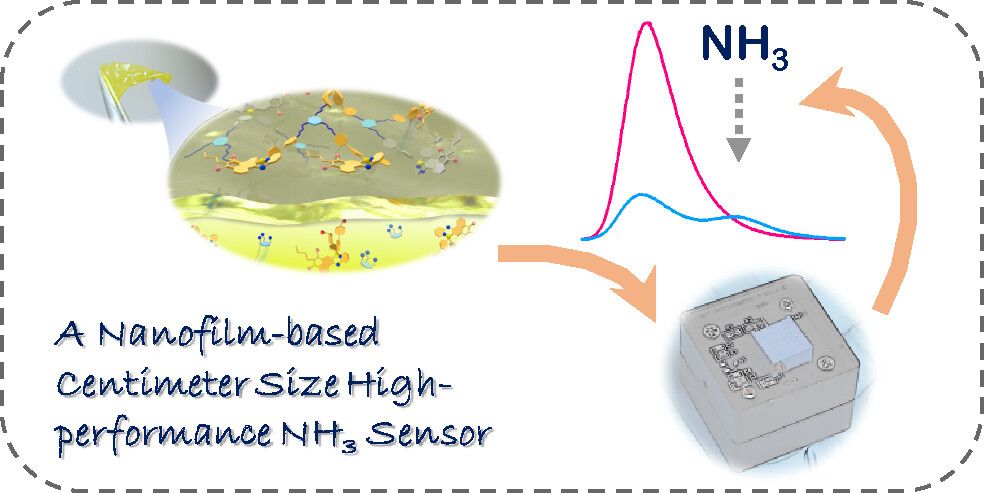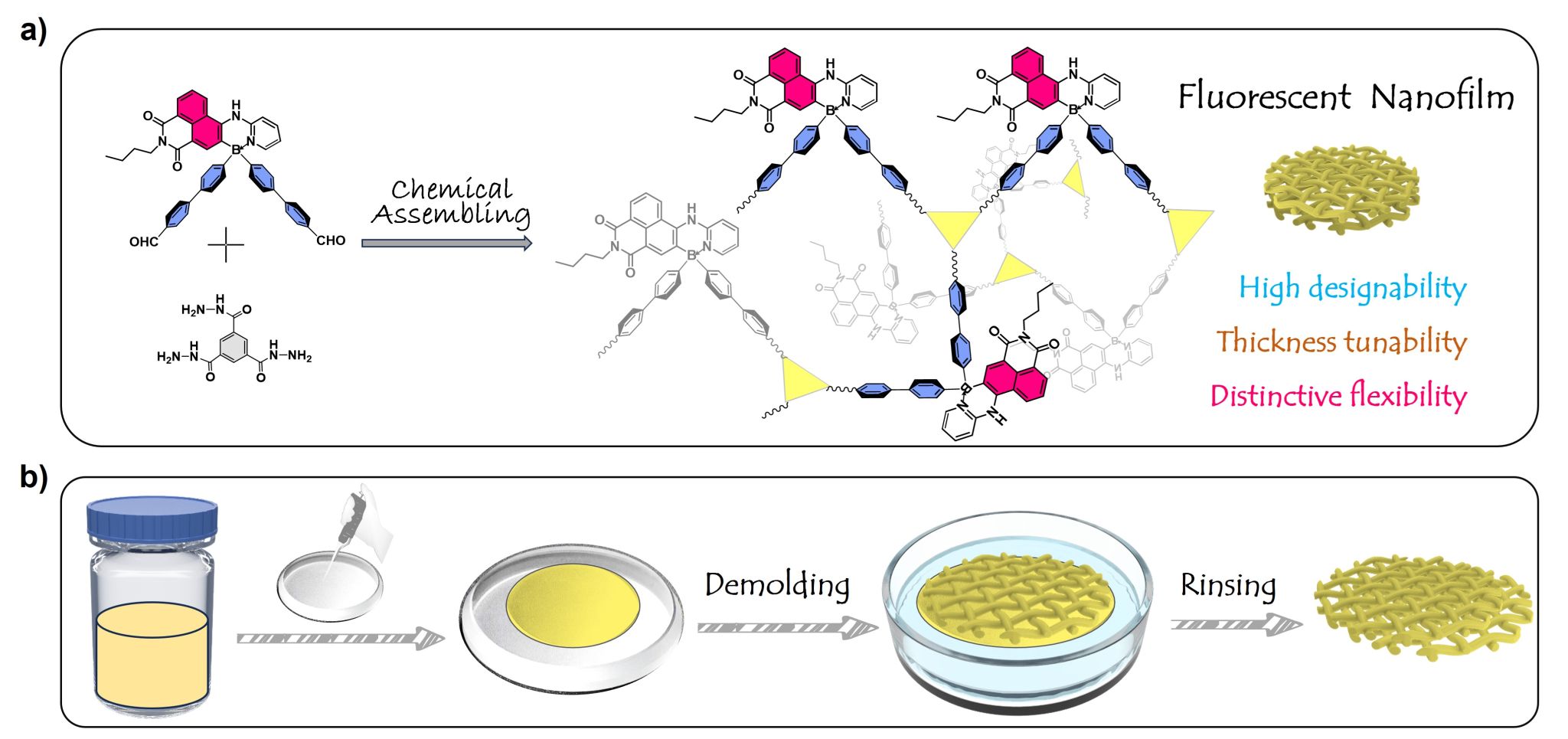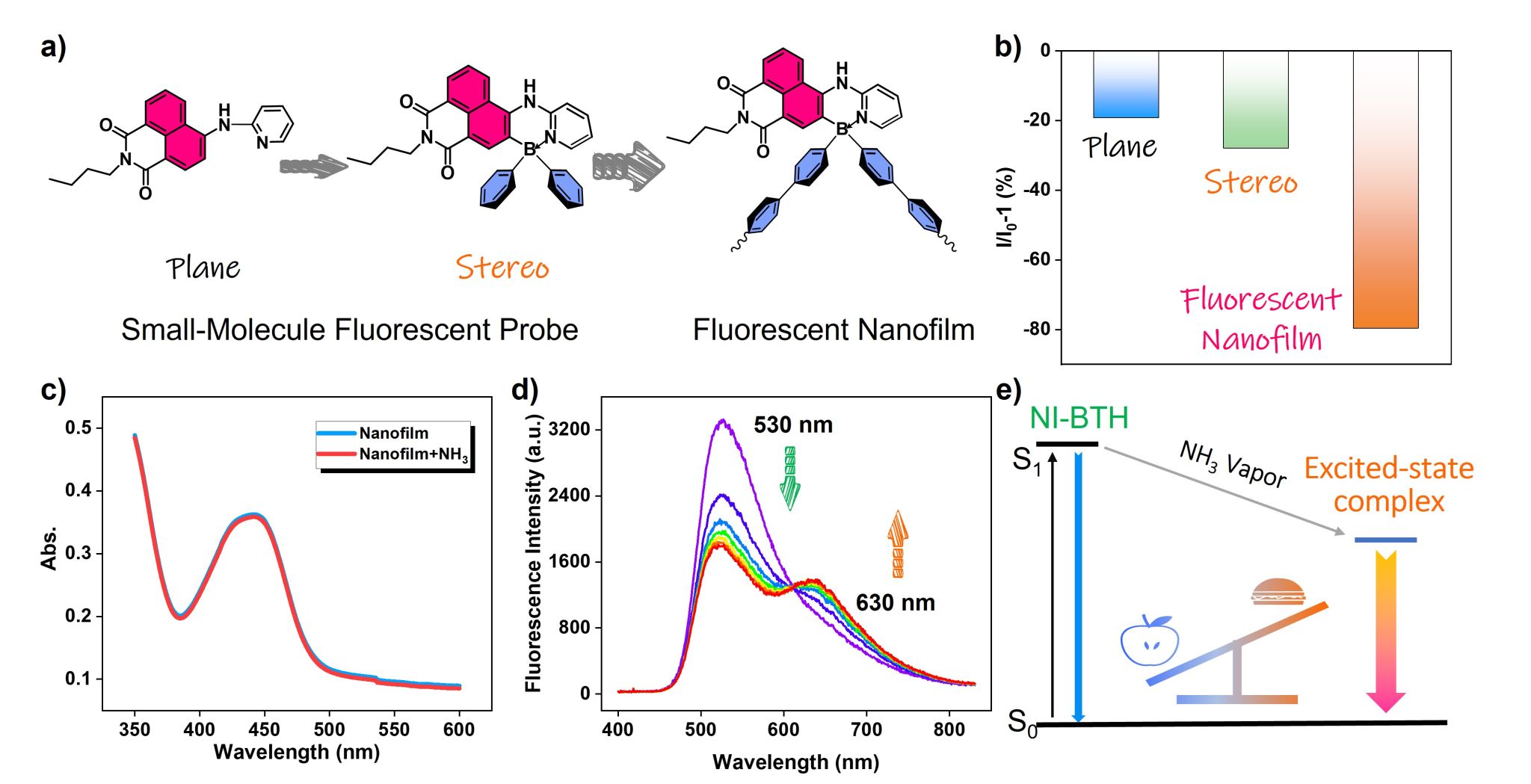
Jingjing Liang, Dingfang Hu, Wenjun Xu, Lingya Peng*, Ke Liu*, and Yu Fang*. Anal. Chem., 2024, 96, 2152-2157.

With the rapid growth of industries related to the Internet of Things, wearable devices, and intelligent life, there has been an increasing recognition of the significance of development of sensing technologies and relevant devices. In the past twenty years, remarkable progress has been made in the field of film-based fluorescent sensors (FFSs). However, to meet the requirements of practical applications, these thin film-based fluorescence sensors must meet a series of stringent standards such as “3S + 1R” (sensitivity, selectivity, speed, and reversibility) and great photochemical stability. Therefore, the ongoing pursuit of sensing materials with superior performance is of urgent significance.

Figure 1. Schematics of the preparation of the nanofilm.
Using the specific structures and properties, boron-coordinated molecules were designed as fluorescence sensing materials. Research has been conducted on the fluorescent tetrahedral boron molecular system, which has an extremely wide temperature variable range and can achieve temperature monitoring from -80 to 60°C. Nevertheless, the sensing systems based on boron-coordinated fluorophores are predominantly utilized in solution state, with only a few instances of solvent-free systems being demonstrated. The inherent limitation in device making of the reported systems in solution state makes it important to develop new boron-containing molecular materials with solid-state stimulus-responsive properties.

Figure 2. Response performance of portable sensors to ammonia.
In this context, we introduce the concept of chemical weaving to immobilize boron-coordinated small molecules into polymeric nanofilms. we fabricated four nanofilms via interfacially confined dynamic reaction of one specially designed fluorescent building block boron-coordinated molecular fragment (NI-CHO) with a known compound benzene-1,3,5-tricarbohydrazide (BTH) of multiple reactive sites. The nanofilms as prepared are fluorescent and show superior robust, flexible, uniform, thickness tunable, and self-adhesive properties. Especially, one of the four nanofilms, Film 3, depicted highly selective, sensitive, fast, and reversible sensing performance towards NH3 vapor. The experimental detection limit (DL) is lower than 0.1 ppm, and the response time is shorter than 0.2 s at room temperature. The reasons behind the sensing are ascribed to the formation of an excited-state fluorescent complex between the fluorescent building block and the analyte molecule as well as the efficient mass transfer of the analyte molecules within the adlayer owing to its porous structure. We believe that the presented interfacially confined dynamic assembly strategy can be also used for the creation of other sensing films through the innovative design of new building blocks, which function as sensing units.
First Author: Liang Jingjing, doctoral candidate, Shaanxi Normal University
Correspondence Authors: Prof. Fang Yu, Lecturer Peng Lingya, Shaanxi Normal University, and Prof. Liu Ke, Northwest A&F University
Full Text Link: https://pubs.acs.org/doi/full/10.1021/acs.analchem.3c05032